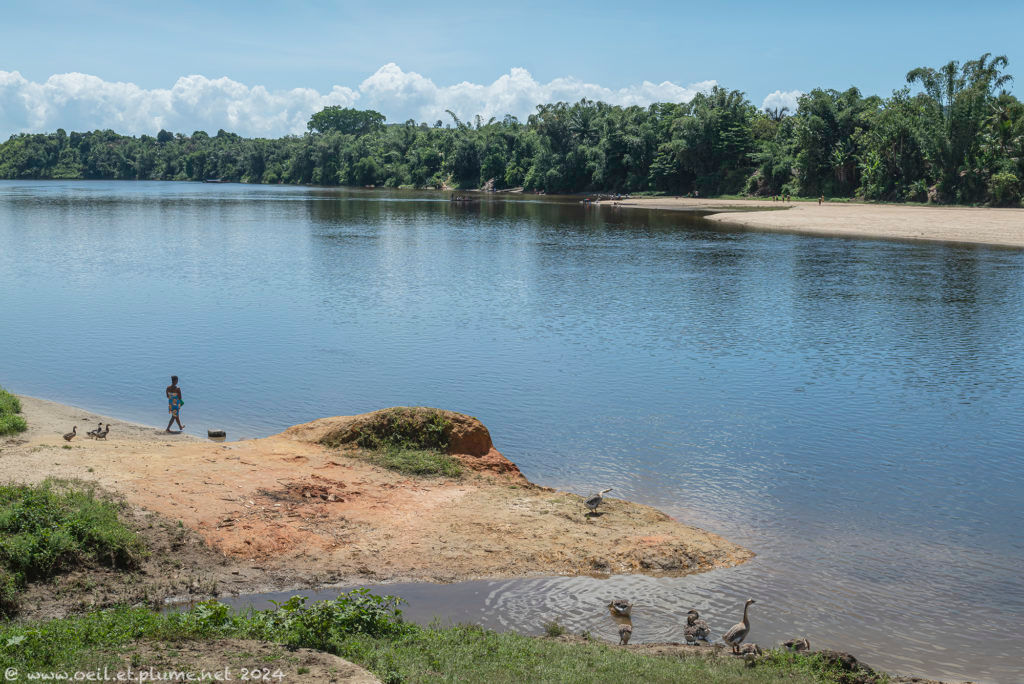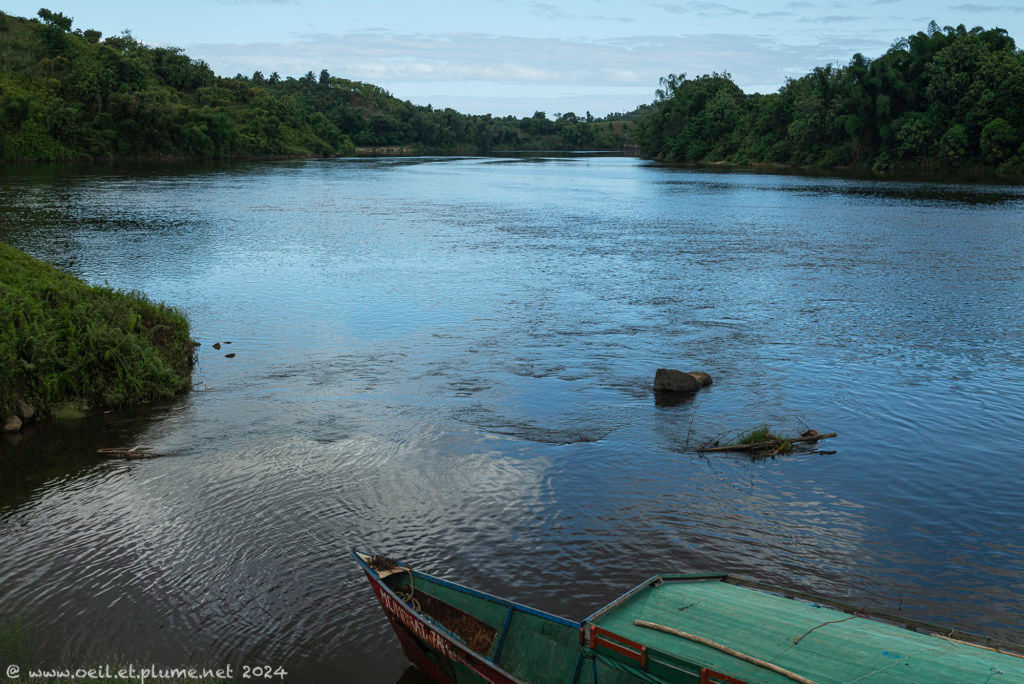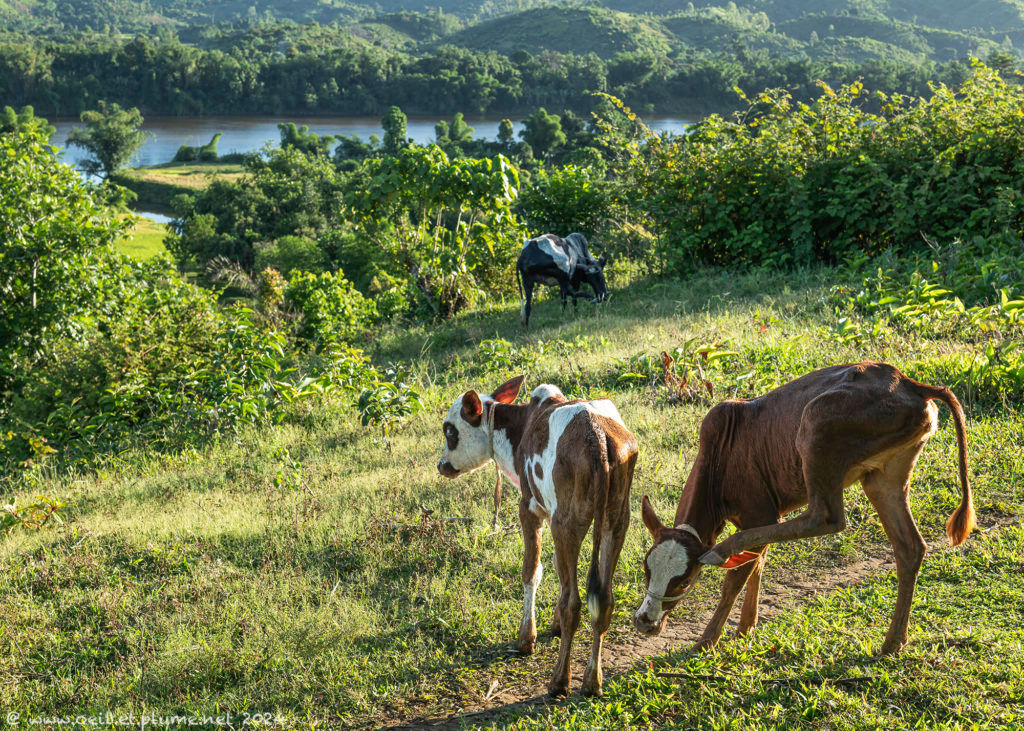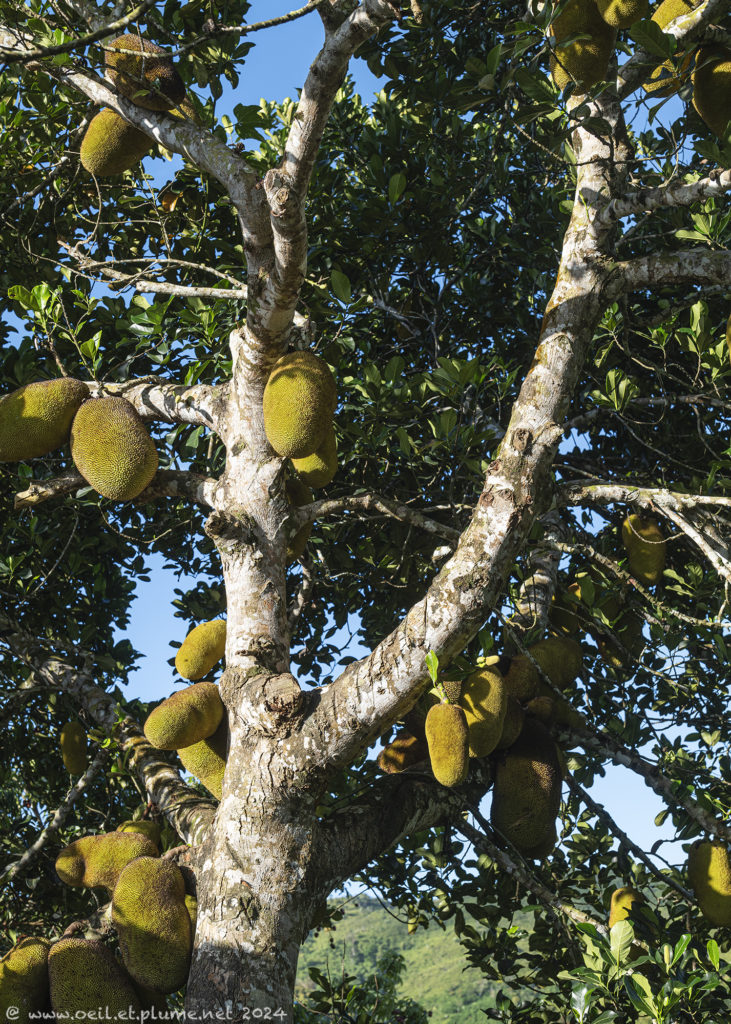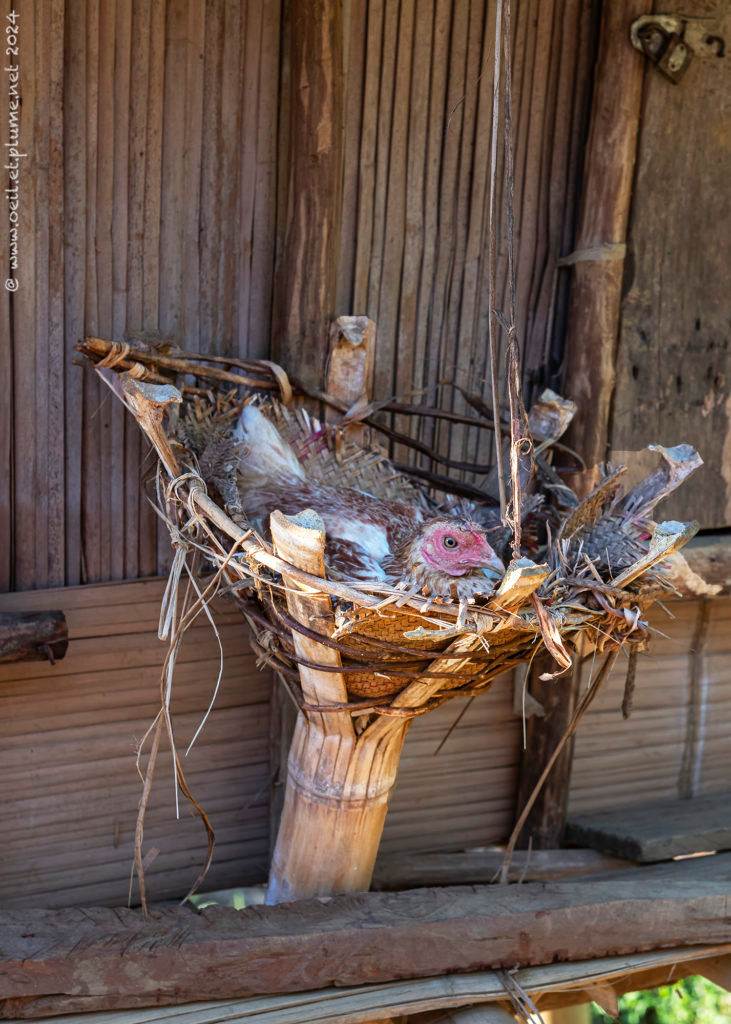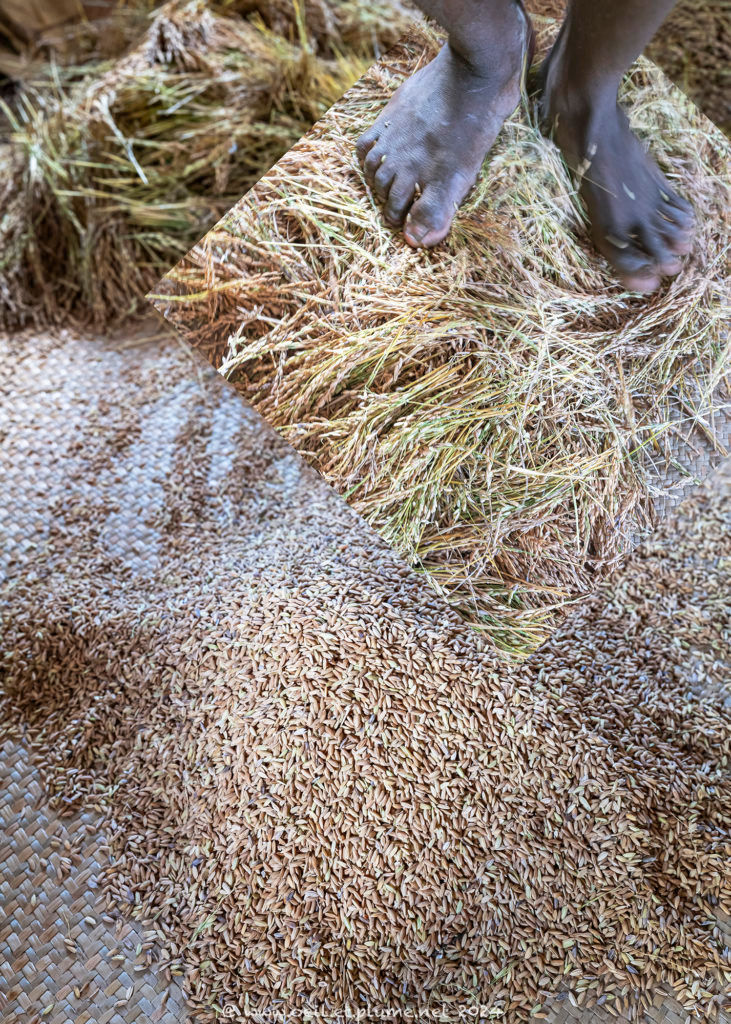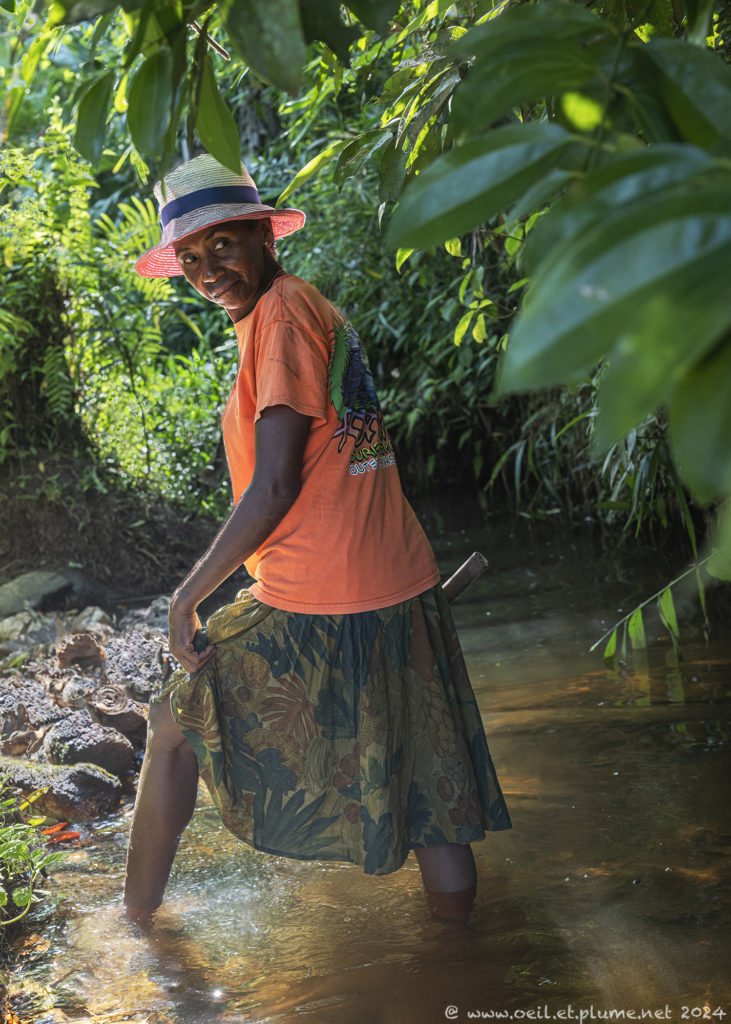As part of my travel along the eastern coast of Madagascar main island, I joined a family trip aiming to visit in-law relatives living in a remote rural area north of Tamatave (Taomasina).
For half-a-day, our boat runs upstream in a labyrinth of rivers and tributaries. Our itinerary includes countless meanders alternating with long and straight sections. I am fascinated by the bamboo explosions that erupt along the waterway. At times, the river is so large that we lose close sight on the shore. Human presence is scarce and barely visible.
Rural life
Our boat reach our destination station by the end of the afternoon. We continue on foot to the village who will host us. On our way, Nature displays some of its best seasonal products. Rice fields are beautifully shaped and carved in the rural landscape; baked by the soft ambient light, they shine like invaluable gems.
Sweet home and fruits
We finally reach our destination: the hamlet consists in a dozen of wooden houses surrounded by large fruit trees and rice fields.
Our welcome drink consists in fresh coconuts, complemented with sweet lichees. Lichees, jackfruits, cocoa, soursoap, mangoes and other fruits are all around. Many lichees, jackfruits and mangoes get spoiled on or near their trees because they cannot be collected, consumed or traded timely.
Albeit the jackfruit resembles the durian visually, both taste and smell very differently. Unlike the jackfruit, the durian smells terribly strong. Very common in Asia, it does not grow in Madagascar. The fruit hereafter is completely unknown to me.
Rice
At dawn, the villagers are already up and start their rural activities. Throughout the year, rice farming constitutes the main local occupation, complemented by cattle raising. Zebus (local cows) are usually not raised to produce milk; instead, they are instrumental to heavy agricultural field work. Most of the day though, they are left to pasture in the grass fields. In the fields, the rice ears swing graciously in the air, painting the space with light green and yellow colours and shaping the atmosphere with an overwhelming serenity.
Once harvested, the rice crop requires much patient hand and foot work to be ready for cooking. Women spend hours extracting, sorting out and preparing grains for cooking, using mostly pestle and sieve.
Cloves
Coffee plantations are no more so many in the area, supplanted by more lucrative clove farming. As our stay in the village coincides with the annual clove harvest period, we set off to clove plantations located uphill this morning, led by a not-so-discrete but diligent chameleon.
I collected as many cloves as possible, but not half of what a trained clove farmer could do in the same time period. To my defence, I was often called to witness the hard work of our daughter. Never mind, there has been a lot of fun in the experience.
Once back home, cloves need to be prepared for drying with no delay. Sun drying in a tropical climate can be arduous. Prompt action is often required in order to spare the clove production from sudden rain showers. Slowly but surely, the cloves acquire the dark colour that is familiar to consumers.
Rural lifestyle
We spent a week in this genuine and serene rural environment. The experience proved to be terrific, shaped with awesome landscape sceneries, social encounters and new occupational experiences. Rural life is not easy and can be rude at times. It obviously lacks easy access to technology and comfort. However, Pastoral life distills plenty of positive energy in terms of healthy lifestyle and social interactions, that even the visitor can sense and harness. This is what many more economically-advanced communities have lost during their development pathway.

Many features of rural life experienced during the visit are found also in Sainte-Marie island, albeit to a lesser extent. The community visited relies exclusively on agriculture and herding, unlike local people in Sainte-Marie who count also on fishing and tourism revenues for their living. Both communities’ exposure to the outside world differs also notably. I happened to be the first vasa (foreigner) who ever visited the village. In Sainte-Marie island, local residents are used to the presence of foreigners since centuries.
Amongst the many good memories of our stay, the following one was quite unexpected. Silent over daytime, frogs take full possession of the sound space in the rice fields during the night. Their chorus reaches its climax just before dawn. One night baked by full moon light, I visited them in their natural concert arena:
You frogs have it right: you own the night, you celebrate the moon light, you enjoy the best of rural life.
Cheers,





